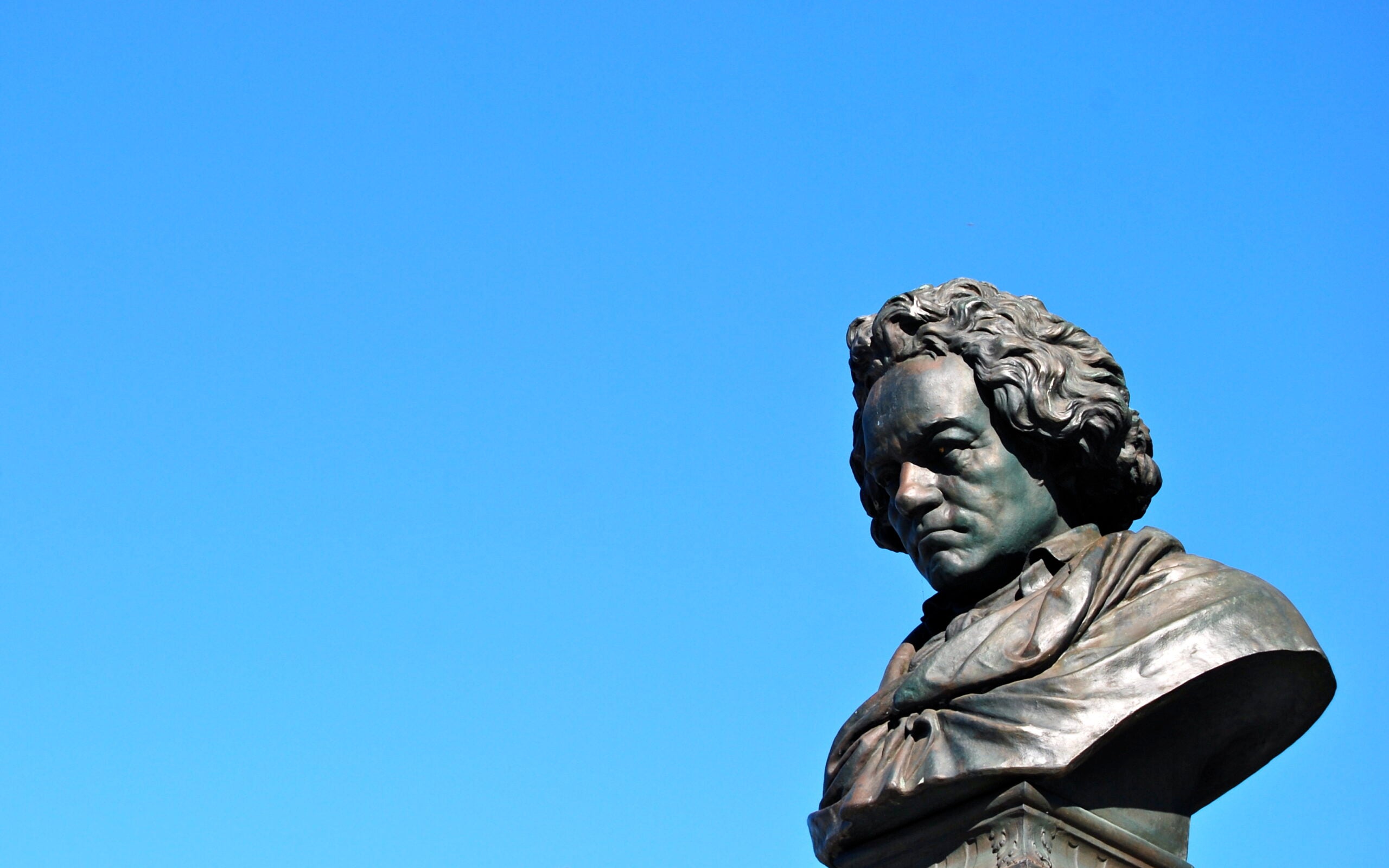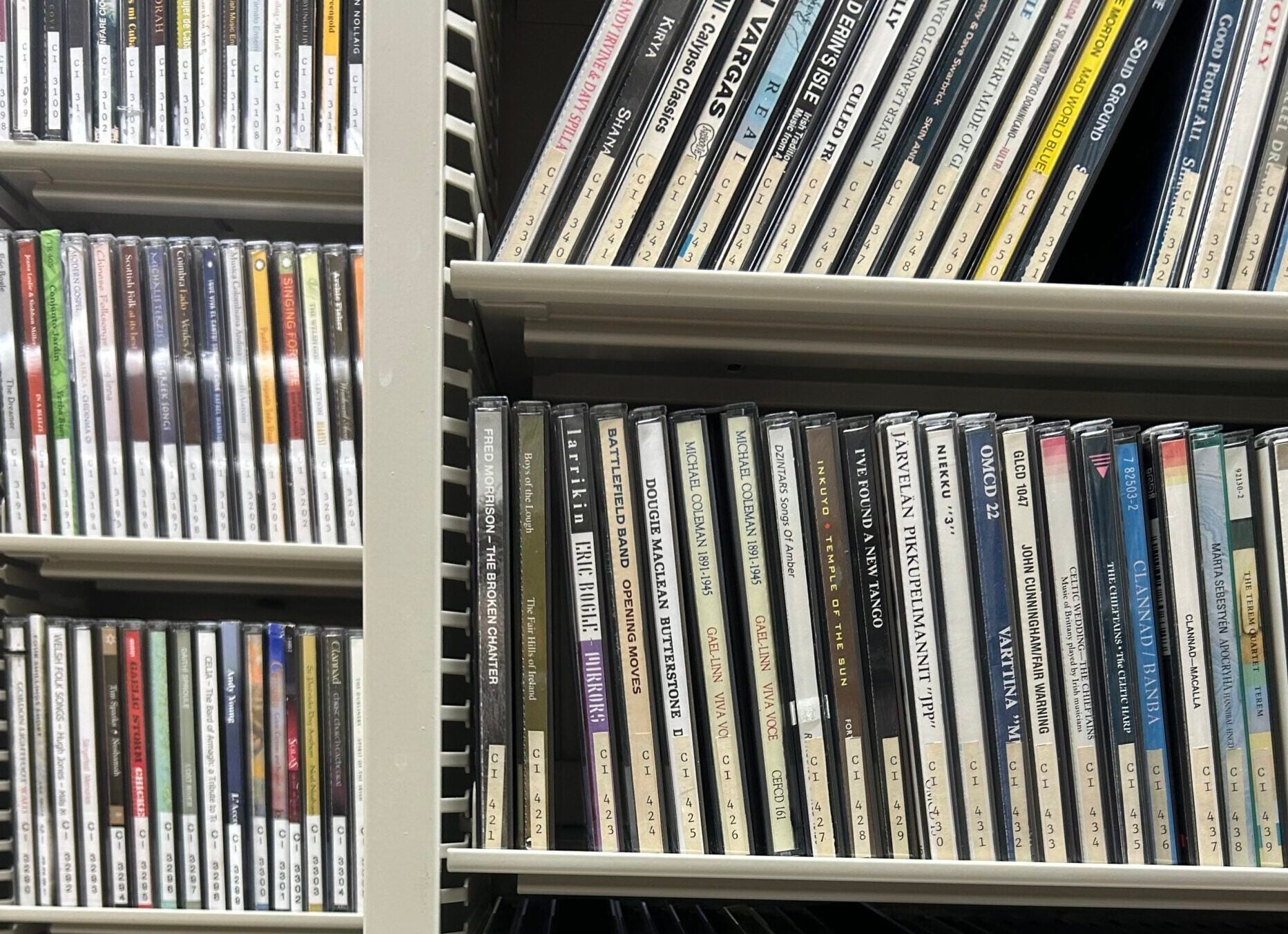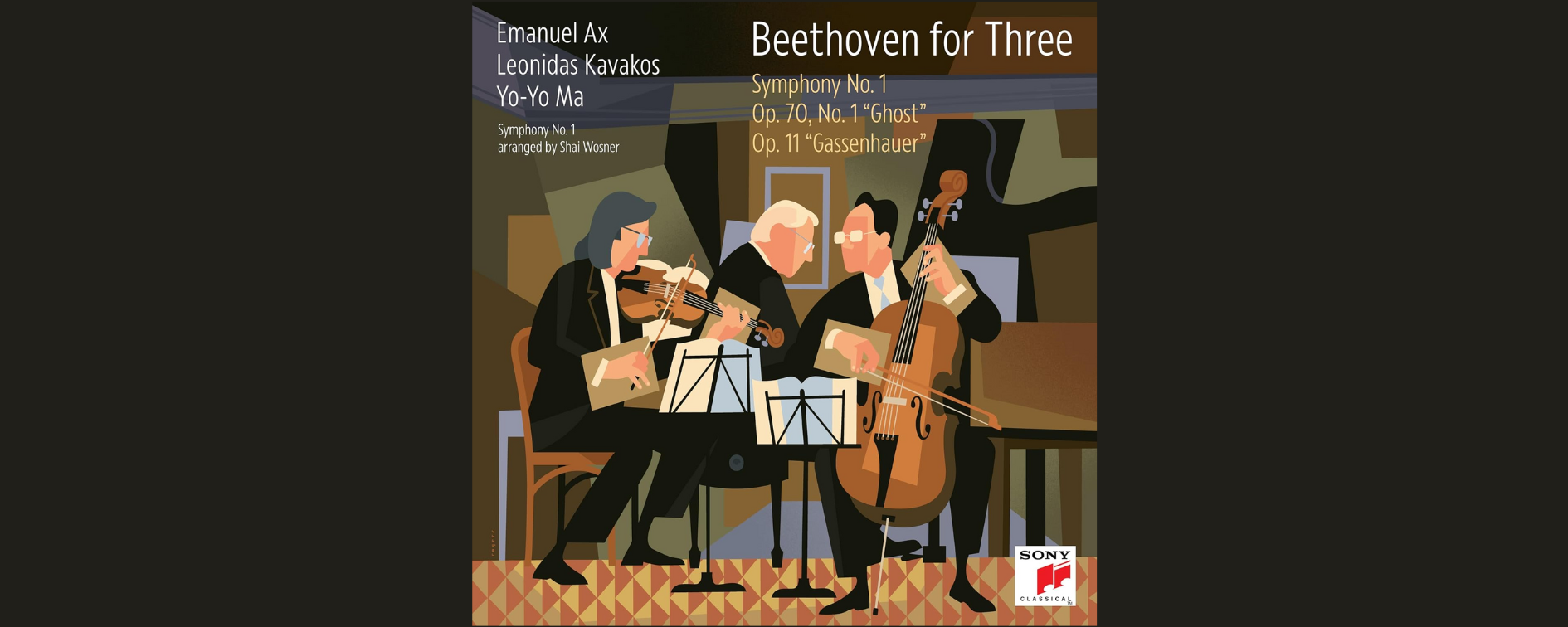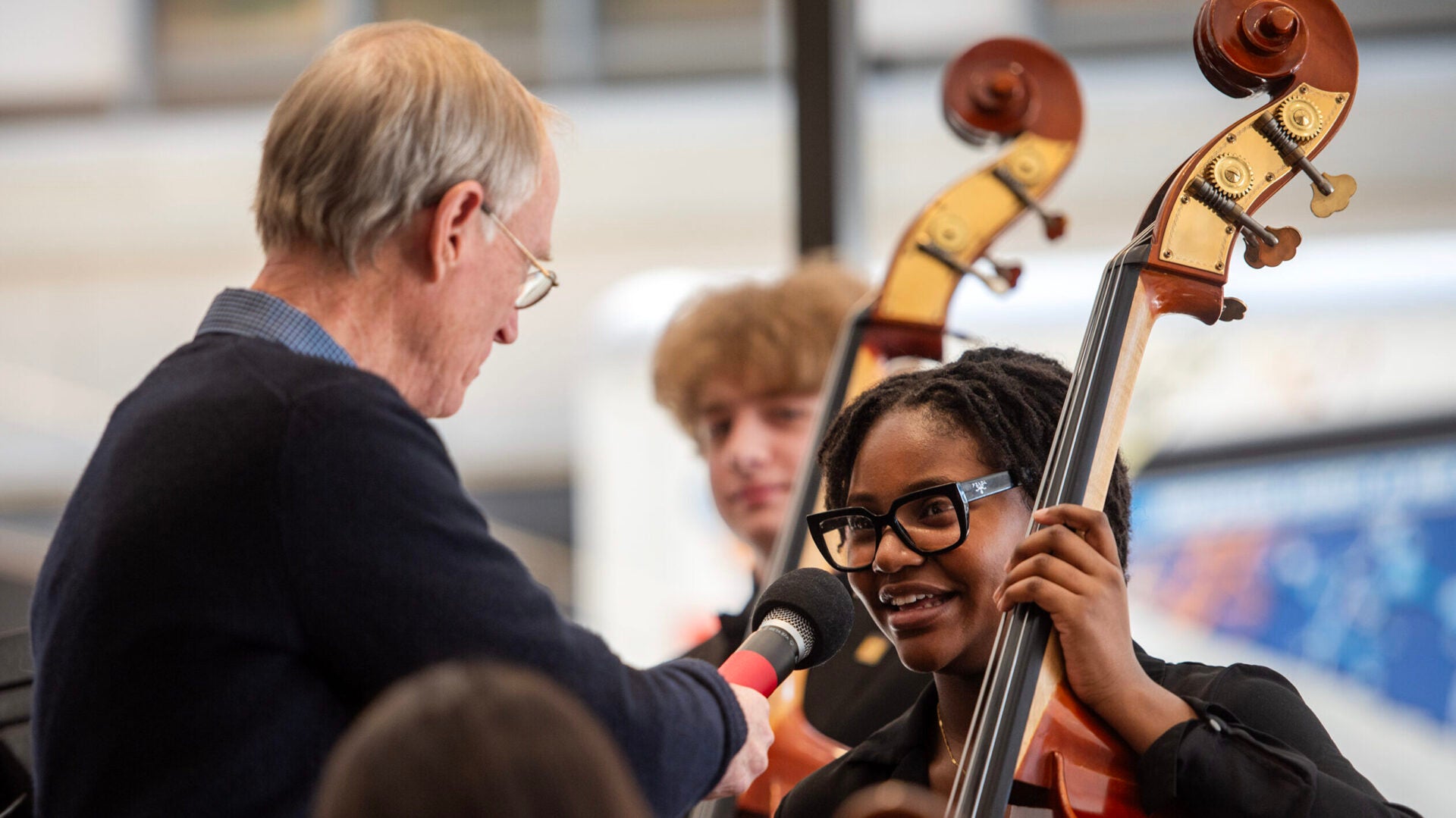December 16, 2020 marks the 250th anniversary of the birth of Ludwig van Beethoven. It’s a good excuse to celebrate a remarkable composer, whose revolutionary music continues to inspire and influence people.
The WPR music staff put together this collection of their own experiences with Beethoven’s music. The variety of choices says a lot about how relevant this music still is. We’d love to hear about your experiences with the music, too!
Dan Robinson, ‘Simply Folk’ Host
News with a little more humanity
WPR’s “Wisconsin Today” newsletter keeps you connected to the state you love without feeling overwhelmed. No paywall. No agenda. No corporate filter.
Folk music reverences the past. That reverence can come in the form of lyrics that memorialize former times, or it can find itself in the renewed versions of traditional songs by contemporary artists. Another expression of that reverence is the “folk process,” where musicians re-work music from the past into new songs that both celebrate and expand on this musical heritage.
While no one would mistake Billy Joel for a folk musician, he does use the folk process for his song “This Night.” Starting off with a doo-wop style vibe, Joel uses the second movement from Beethoven’s “Pathetique” sonata as the basis for the song’s chorus. Off Joel’s album, “Innocent Man,” the record’s sleeve credits “L.v. Beethoven” as a co-writer on the song. I hope you enjoy this. I know I did as a young man who inherited my parents’ love for doo-wop music!
Lori Skelton, ‘Afternoon Classics’ Host
For as long as most of us have had classical music in our lives, Beethoven’s creative force has always felt bigger than any other composer’s — shaping this, revolutionizing that, putting princes in their place and calling on all humanity to embrace the world.
We tend to forget just how human he was, especially when composing, and then you look at his sketchbooks. You find page after page covered with idea after idea; sometimes he would cross things out, sometimes he would write alternate versions on loose pages, and attach them to the original with red wax. You are always aware of the work and worry that went into what we accept as genius today, but there was a fair amount of work and worry over smaller compositions as well.
In 1792, while still living in Bonn, Beethoven wrote an octet for pairs of oboes, clarinets, bassoons, and French horns. His patron, Archduke Maximilian Francis of Austria, would have had a wind ensemble to provide background music at social functions, but the young composer kept the manuscript, no doubt seeing something other than a diversion at dinner. It may be light on the ears, but Beethoven was already beginning to experiment with standard musical forms. For instance, the third movement, with its expected minuet designation, has, in its humorous leaps, strong hints of the scherzos he would prefer in later life.
Once in Vienna, studying with Haydn, Beethoven revised the octet, telling his teacher that it was a new piece. By 1795, he recast it as a string quintet, what we now know as Op. 4. The original version was published posthumously; while it may not rank as a great, or popular piece (there are only five recordings in the WPR library), it is a pleasing reminder of a young composer learning his craft. And what better way to hear it than from eight young musicians, learning theirs:
Jonathan Overby, ‘The Road to Higher Ground’ Host
In truth, Beethoven and I have never been the best of musical buddies. And it’s not because I’m not too fond of his music. I am. I’ve even sung in groups performing his Choral Symphony No. 9, his “Missa Solemnis,” and his Mass in C, which tells me I’m not genetically predisposed to disliking specific music genres. Right?
The problem seems to be when I listen to his music, like his Symphony No. 5 with its intimidating, soul-twisting (globally lifted) four-note motif, from the outset it exposes and grabs hold of my deepest feelings and won’t let go. Then without warning, I might add, hurls them from one side of the room to the next. And then his music, for more than 30 minutes or so, refuses to afford me ample time to relax long enough to catch my breath so that I can gather my emotions scrambling across the floor.
Maybe what I need is a musical chef, you know, one of those online self-help guru types offering tutorials designed to gently nurture, cultivate, and guide me to a personally tailored pathway to increased musical health. I think that’s it.
So here’s my plan that starts with changing my attitude about Beethoven by inviting him to become part of my close circle of classical musical friends that have primarily been limited to Brahms, Faure, Shubert, Dvorak, and Bach, whose vocal and choral works, by the way, are nothing short of musical magic.
Beethoven is without question, the GOAT among all Eurocentric classical composers, and I do respect his musical genius. Moving forward, I’ll expand my listening, remain open-minded while journaling my every mind-bending emotion in a safe space with the lights on, and keenly mindful that’s its only music.
Perhaps, I’ll find a measure of healing gleaned from one of his final piano sonatas as an appetizer before returning to one of his meatier entrees.
Chilean pianist Claudio Arrau performs Beethoven’s Piano Sonata No. 32 (I like this performance setting with the audience on stage.)
Ruthanne Bessman, ‘Classics By Request’ Host
As this year marks the 250th anniversary of Ludwig van Beethoven’s birth, it’s only appropriate that the current topic of WPR’s music blog surrounds the composer’s works. Later this year, I will be hosting a special “Classics by Request” program exclusive to the compositions of Beethoven, so for this post I decided it might be fun to choose something a bit different from the composer’s usual fare.
My daughter highly recommended listening to the Grammy Award-winning Japanese pianist/composer Hiromi Uehara’s take on the second movement from Beethoven’s Piano Sonata No. 8, the “Pathetique”. Hiromi, known professionally by her first name, begins the movement exactly as the composer notated it; once the theme is introduced, bassist Anthony Jackson and drummer Simon Phillips join in improvising on the famous theme and take it in a bluesier direction. Hiromi has her own style and is extremely confident in her approach. Her masterful technical skills are only surpassed by her dynamic energy and joy that she brings to her performances.
Hiromi explains her approach to her craft in the following way: “When I play music, I realize that it filters emotions. I believe that peoples’ voices are expressed in their emotions, and I try to do the same with my music.” She adds, “I don’t want to put a name on my music. Other people can put a name on what I do. It’s just the union of what I’ve been listening to and what I’ve been learning. It has some elements of classical music, it has some rock, it has some jazz, but I don’t want to give it a name.”
In case you want to watch Hiromi in performance, the following link is a longer version than what was featured in her album called “Voice”: Hiromi: The Trio Project – Beethoven’s Piano Sonata No 8, Pathetique [Live In Marciac 2012]
Stephanie Elkins, ‘Morning Classics’ Host
It was the 1970s and I was babysitting for the grand sum of 75 cents an hour.
The family had a piano and told me I could play while there — the toddler would sleep through it.
Since they didn’t have a television and I hadn’t brought a book, I rooted around for some music. I was a mediocre pianist who took regular lessons but didn’t practice enough, so most of what they had was over my head.
But, there was a Beethoven piece that rang a bell: the Piano Sonata No. 14 in C Sharp Minor, Op 27, No. 2. The “Moonlight Sonata.”
I put it on the piano and opened it to the first page. Yikes! A lot of sharps. I almost put it back to look for something else, but the music itself looked somewhat manageable — there wasn’t much going on in the left hand at first, and the tempo was slow.
I sounded my way haltingly through the first page and fell instantly in love with the magical, beautiful, awe-filled soundscape conjured up by Beethoven.
It had been a tough year — my dad died in a drowning accident, then I got sick with severe mononucleosis shortly afterwards. I was in a new school and was a couple of years younger than everyone else in my grade. I could put on a strong front, but underneath I felt terribly alone and full of difficult emotions. Those feelings didn’t have an outlet. Until Beethoven.
Every time I worked on the “Moonlight Sonata” I would enter an incredibly special and personal world — one that understood me, spoke to me; one that I could relate to. Playing the piece became a kind of musical sanctuary where I found solace and could express grief, beauty, love, longing and loneliness through my fingertips.
Full disclosure, I mastered the first movement but could only hack through some of the second, which has a lovely sense of joy and lightness of spirit. The tempestuous third movement was out of reach, but that didn’t stop me from wading into some of its powerful drama anyway.
When Beethoven wrote the “Moonlight Sonata” he was already going deaf and trying to keep it a secret. And he was lonely. He dedicated the work to a piano student he’d fallen for, a beautiful young woman he’d begun teaching when she was 18 and he was 30.
Beethoven the composer wore his emotions on his musical sleeve, and in this case, his own longing, love and pain spoke directly to a suffering 14-year-old decades ago, providing just the right emotional lifeline. I am forever grateful.
Anders Yocom, ‘Sunday Brunch’ Host
I’ve often tried to imagine how the great composers of the 17th, 18th and 19th centuries would react to the many ways their great works and fragments of their music are played and heard in the 20th and 21st centuries.
Would Henry Purcell feel properly appreciated at hearing “Dido’s Lament” on a kitchen radio while dishes are washed? Mozart might be delighted at listening to one of his piano concertos on the car radio while traveling the interstate at 75 mph. But maybe not. Would Richard Strauss approve the use of the opening fanfare from his tone poem “Also Sprach Zarathustra” to enhance an epic effect on screen in the 1968 movie classic “2001: A Space Odyssey”? (Approval might have been easily granted had Strauss been alive to receive a generous royalty.)
I lived in Connecticut in the ’60s and early ’70s and was intrigued at the frequent on-air use of the most famous four-note motif in all music. In those days, some radio stations broadcast time signals every hour on the hour. The dominant station in Hartford was WTIC. The station’s time signal was (and is) an electronic tone sounding dit-dit-dit-daah, quoted from Beethoven’s Symphony No. 5.
Noting that dot-dot-dot-dash in Morse code is the letter “V”, WTIC began the practice in 1943 during World War II. Morse code V was an hourly reminder that “V is for Victory.” In Morse code, the three dots and a dash are monotone. WTIC’s four-note time signal copied four tones of Beethoven’s motif.
Beethoven died in 1827, and Morse code was developed in the 1830s and ’40s. He could not have known about his connection to the letter “V” or the extent to which his four notes at the beginning of his 5th Symphony would become so famous.
Sile Shigley, ‘Simply Folk’ Host
As is true for so many beloved folk songs, the origin of “The Lament for Owen Roe O’Neill” is steeped in mystery. Without question the air began life as an Irish Gaelic ballad composed upon the death of commander Eoghan Ruadh Ó Néill, who routed the English at the battle of Benburb in 1646 shortly before his equally mysterious death.
Destined to be included in Beethoven’s “Seven British Folksongs”, the lament became a favorite air among Irish fiddlers. Though often credited with its composition, Irish harpist Turlough O’Carolan was not born until 1670 and likely absorbed the tune from fiddlers, singers or both.
In the early 1800s, Scottish collector George Thomson implored Beethoven to contribute arrangements for regional traditional music. Here are both traditional fiddler Liz Knowles’ and Beethoven’s approaches to “The Lament for Owen Roe O’Neill,” showing the ballad’s remarkable continuity of spirit in its journey through so many voices, hands and generations.
Liz Knowles:
Beethoven:
Norman Gilliland, ‘Midday’ Host
When he was in his 20s, Beethoven wrote a set of 12 contredanses. The seventh of them was a little tune in E-flat that must’ve turned into an earworm for Beethoven.
In 1801 Beethoven used that tune again for something bigger — the finale of his ballet “The Creatures of Prometheus”.
A year after “Creatures of Prometheus”, Beethoven based a massive set of piano variations on the same little tune.
Beethoven wasn’t through with the tune yet — or maybe it wasn’t through with him, because a year after the “Eroica Variations”, it came back bigger than ever in the finale of Beethoven’s “Eroica Symphony.”
So maybe that little tune really was an earworm for Beethoven, and now that you’ve heard it in its various guises, maybe it will be an earworm for you too.
Wisconsin Public Radio, © Copyright 2026, Board of Regents of the University of Wisconsin System and Wisconsin Educational Communications Board.





